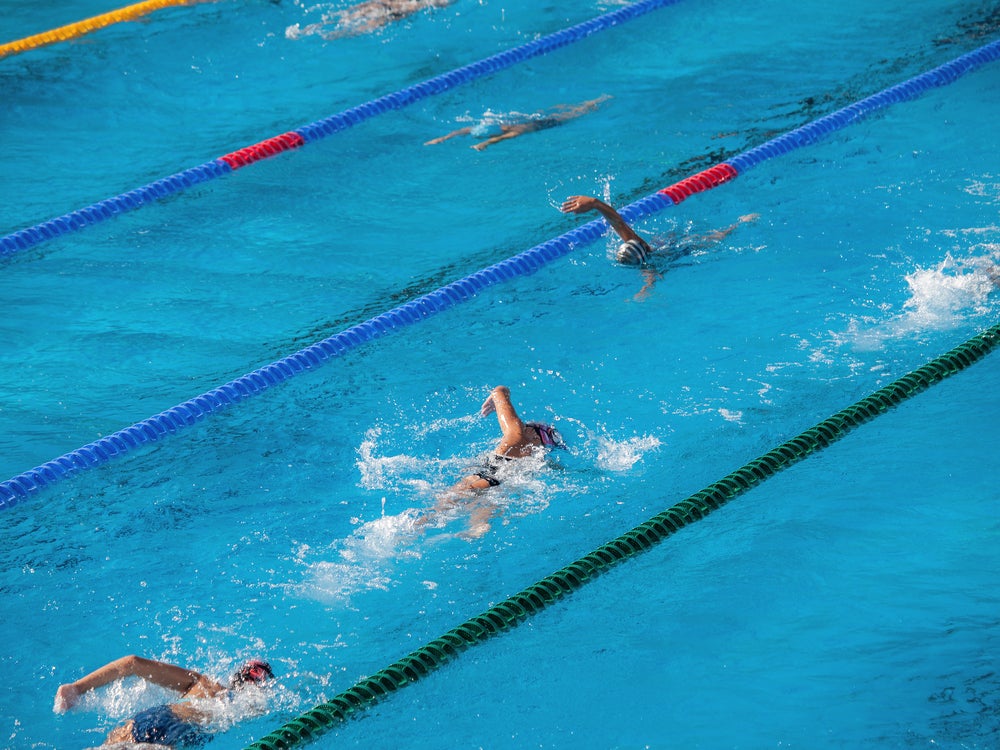Swim Speed Series: Body Rotation

Photo: <a href=http://shutterstock.com>Shutterstock.com</a>
Focus on better body rotation for greater power and speed.
There are two compelling reasons to rotate the body in freestyle and backstroke. First, the rotation puts the arm and body in a favorable biomechanical position for the underwater pull. That’s because you now use your back muscles, particularly that large latissimus dorsi muscle, much more effectively.
The second reason you should rotate your body is what I call the “pitching mound” effect. If you could throw a baseball from a pitching mound overhand at a speed of 60 mph, and I threw you into the deep end of the pool where you could not stand up, in spite of your most vigorous attempt to rotate and hurl the baseball, you would lose about half of your ball speed in an attempted throw because you don’t have anything solid underneath you to push against. It is easy to visualize getting a good turn by pushing off a solid wall, but what is there to push off of in the middle of the pool? Most people would say, “water molecules,” but there is more.
RELATED – Swim Speed Series: Keep You Head Down
Each time you initiate an underwater pull, it is supposed to happen precisely as the body begins to counter-rotate toward the pulling arm. As the arm continues its pulling motion, the body’s counter-rotation creates a force against which you are pulling—the swimmer’s pitching mound. The bigger and faster the body rotation occurs, the greater the force and the more powerful the pull becomes. The force from the counter-rotation gives you something more than just water molecules to pull against.
If the body rotation is so beneficial to increasing swimming power and speed, why is it that most swimmers look like surfboards that grew arms and legs? Both the rotation and the counter-rotation require a lot of work. One has to have tremendous core and even leg strength in order to rotate the body effectively while swimming. Many swimmers simply don’t want to invest the energy to develop that strength.
Whether the rotation is generated more from the hip with a slower stroke rate or from the shoulder with a faster stroke rate, body rotation is a critical movement to increase your distance per stroke.
Start working on your core today—the exercises on the previous page can help—to strengthen your rotation and get to a faster swim.